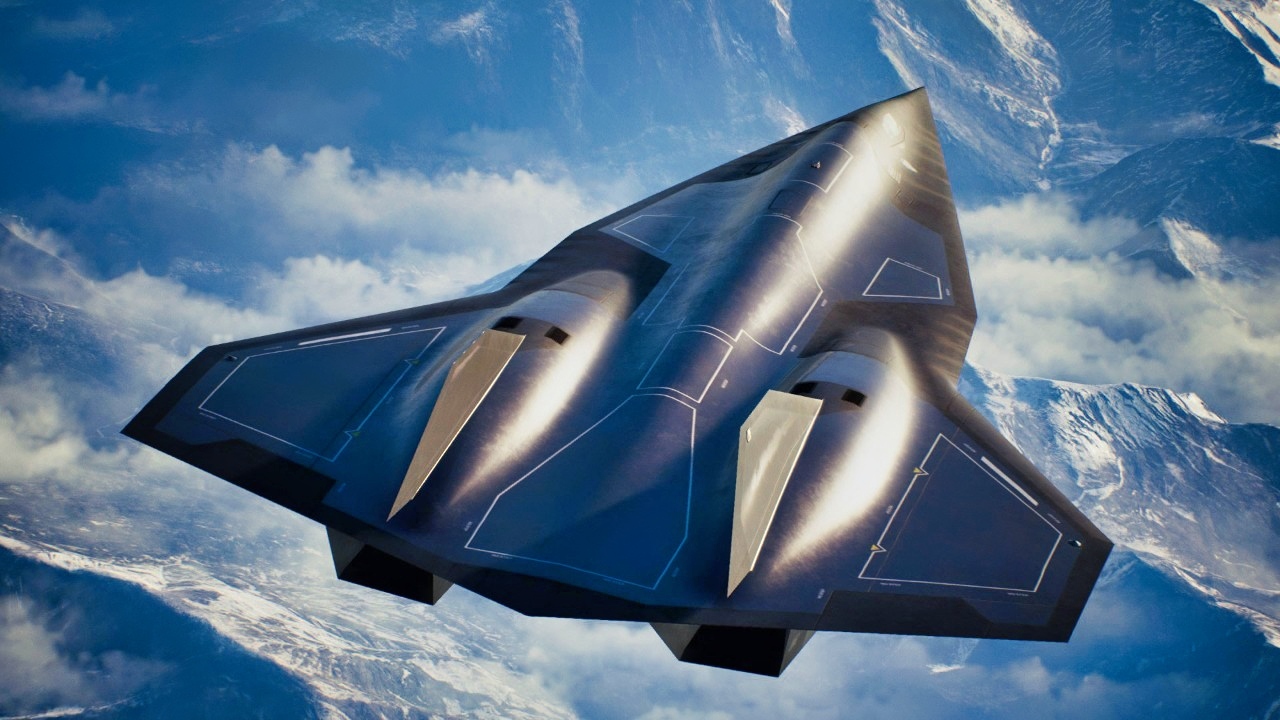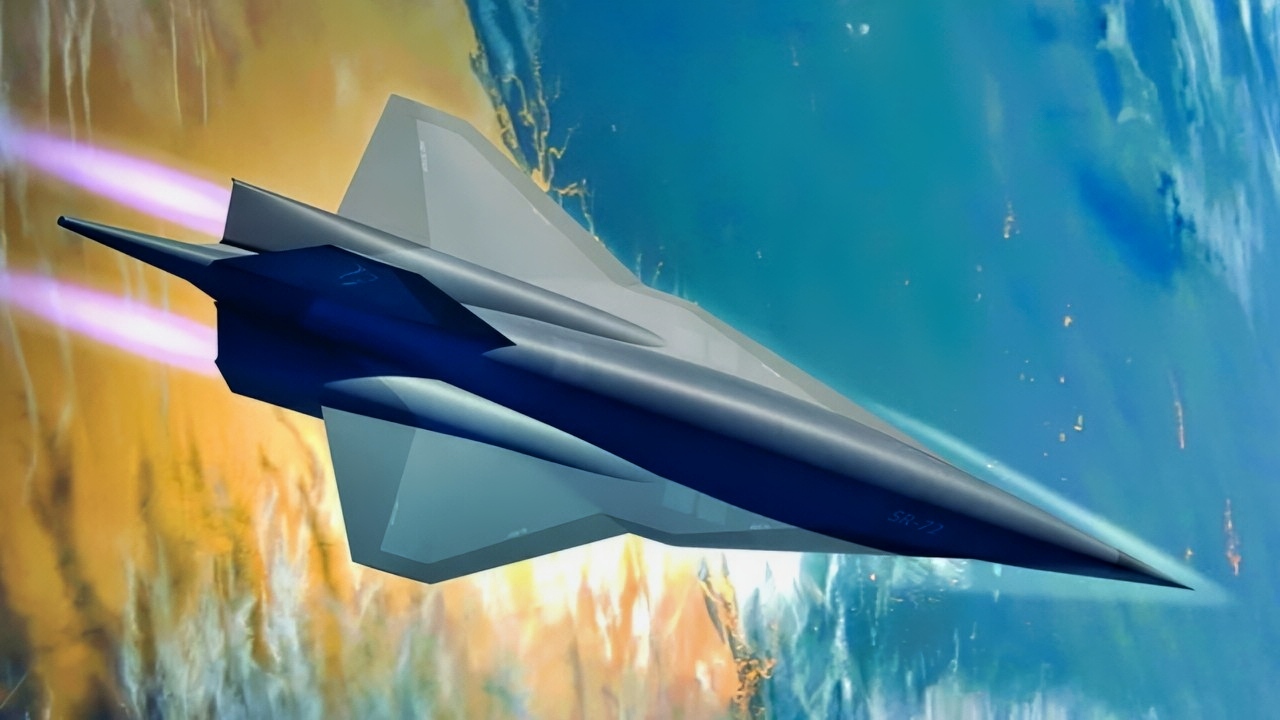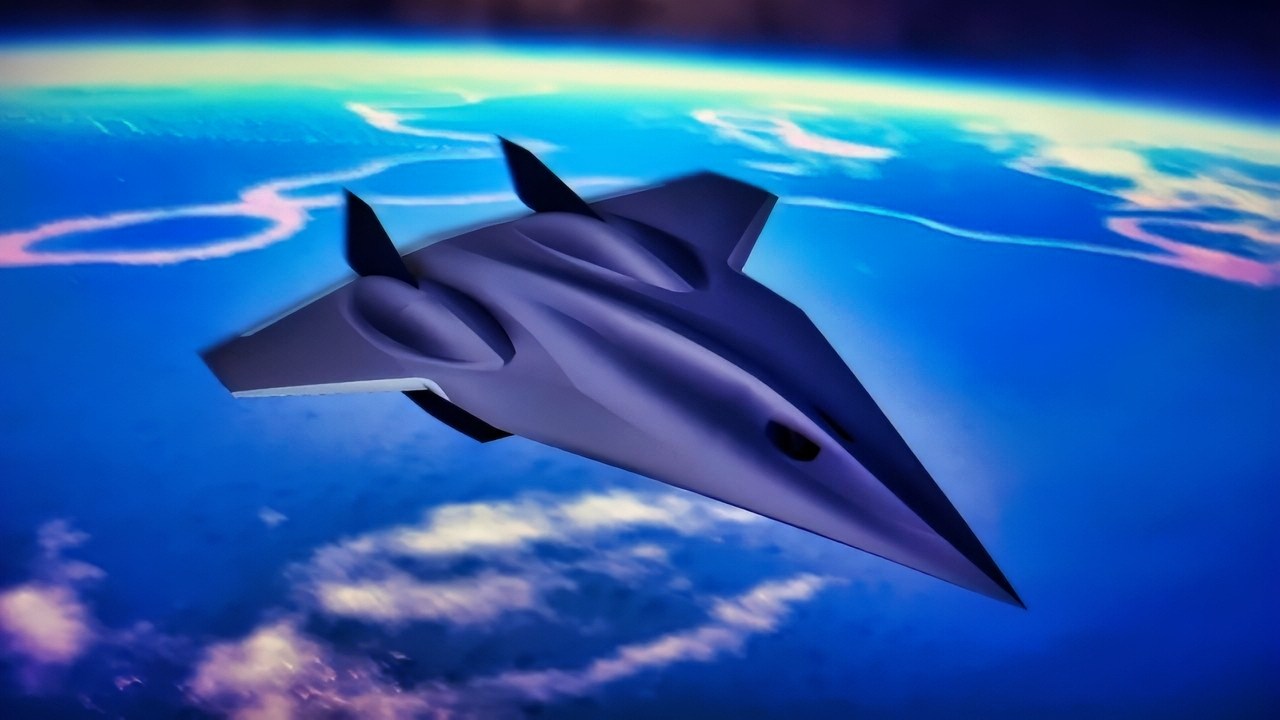Key Points and Summary – America’s proposed SR-72 revives the Blackbird idea: survive not by hiding, but by outrunning.
-A Mach-6 ISR/strike jet could compress decision cycles, pierce dense air defenses, and bridge satellites, drones, and shooters.

SR-72 Son of Blackbird. Image Credit: Creative Commons.
-Critics argue the trend favors cheaper, proliferated sensors and attrition-friendly swarms; TBCC propulsion, thermal loads, and budgets could slip timelines into the 2030s.
-The sensible answer is hybrid: pursue SR-72 as an apex, crisis-use asset while investing in stealthy drones, LEO constellations, and resilient C2 links.
-Speed still matters—if it is harnessed to a durable network so strategy dictates when to sprint, and when to persist over time.
Introduction: What to Make of the SR-72 Darkstar?
When the Cold War’s sleek, SR-71 “Blackbird” of legend vanished from American skies, its successor quietly germinated in the minds of aerospace engineers and national-security planners.
Now, as 2025 arrives, we stand at a crossroads: the SR-72 Darkstar—a purported hypersonic intelligence, surveillance, reconnaissance (ISR) and strike platform under development by Lockheed Martin—is either the next leap in U.S. strategic advantage or an anachronism in a networked, contested-access era.
If the aim is global reach and rapid penetration into denied zones, the SR-72 is a strategic necessity.
Still, if the future battlefield is defined by distributed sensing, resilient networks, and attrition-resistant systems, then a Mach-6 spy plane may be a dazzling but costly distraction.
The Case for the SR-72
Speed still buys something that stealth alone cannot guarantee.
The SR-72’s design goal of Mach 6 would allow it to cover continental distances in under an hour, compressing enemy decision cycles and reducing exposure to air-defense systems.
In theory, this gives the United States a unique ISR and precision-strike capability—able to place a sensor or a weapon over target before an adversary can meaningfully respond.
Although the SR-72 remains largely conceptual, and its true performance parameters are unconfirmed, the aspiration itself reflects a continued American belief in speed as a form of strategic dominance.

SR-72 Artist Image by Lockheed Martin.
That belief rests on more than nostalgia. In a world saturated with advanced integrated air defenses, relying solely on low-observable platforms may no longer suffice.
The SR-72 – actually more commonly referred to as “Son of Blackbird” than as “Darkstar”– offers a different kind of survivability: the ability to outrun, not just out-hide, the threat.
Like its predecessor, the SR-71, the Darkstar represents a philosophy of speed as protection—a reminder that velocity itself can be a form of stealth.
There is also the question of versatility. The dual-role design of the SR-72—part reconnaissance aircraft, part strike vehicle—makes it potentially transformative.
It could bridge the gap between satellites and strike aircraft; between intelligence collection and rapid kinetic response.
For missions requiring deep penetration and minimal warning, there is still nothing like a manned or semi-autonomous aircraft capable of Mach 6 flight.
The Case Against the SR-72
The first line of argument is cost and scale. The character of aerial warfare is changing from “go fast, get deep, hope you survive” to “sense widely, network broadly, and endure.”
Hypersonic platforms of any sort are going to be intrinsically limited in number and cost, no matter how cheaply they can be built.
An SR-72 sortie cannot account for a much cheaper network of drones, stealth aircraft, or space-based sensors.

SR-72 Darkstar. Image Credit: Creative Commons.
In an attritional conflict, depth and redundancy often matter more than elite capability. Building a handful of Mach 6 aircraft risks creating an exquisite but brittle force.
Technical feasibility poses another obstacle. Material, cooling systems, and propulsion architectures that can sustain Mach 6 flight all present serious challenges.
The turbine-based combined-cycle (TBCC) engine design being used to overcome them is still experimental, and the aircraft’s first flight, which is optimistically expected later this decade, could easily be delayed until the 2030s.
Every delay increases cost and raises the question of whether new threats or technologies will make the concept obsolete before it ever flies.
Beyond cost and technology lies the strategic logic itself.
The nature of reconnaissance has evolved toward persistence, networking, and rapid data fusion. If the SR-72 hits or photographs a target and then does nothing for weeks due to maintenance, logistics, or budgetary restraints, its impact might be marginal compared to a flock of autonomous systems or low-cost sensors constantly pushing data into the intelligence pipeline.
A Middle Path
Still, the argument need not be framed as a binary choice between embracing or rejecting the Darkstar.
The SR-72 should be understood as one piece in a layered architecture of sensors, shooters, and networks rather than as the sole future of U.S. air power.
If budgets and industrial capacity allow, developing the Darkstar could preserve America’s edge in high-end propulsion and aerospace engineering—an area where competition with China and Russia is intensifying.
But it should be built in parallel with investments in stealth drones, low-Earth-orbit constellations, and resilient communications links.
This blended strategy would treat the SR-72 not as a replacement for existing capabilities but as an apex predator within a broader ecosystem—called upon rarely, but decisively, when speed and surprise can change the outcome of a crisis.
The challenge is to prevent the glamour of the Mach six platform from crowding out the less glamorous but essential work of building durable and distributed power.
What the Answer Depends On
Whether the SR-72 ultimately proves its worth will depend on three interlocking factors.
The first is technological maturity. If the propulsion, materials, and systems integration hurdles can be cleared at sustainable cost, the aircraft might enter service as a credible deterrent.
If not, it risks becoming a museum piece before its maiden flight.
The second factor is adversary adaptation. As sensor networks expand and counter-hypersonic defenses improve, the speed advantage may narrow.
An aircraft that can outrun today’s defenses may not evade tomorrow’s.

SR-72 from Lockheed Martin. Image Credit: Lockheed Martin.
The third and most decisive factor concerns mission definition. If U.S. strategy demands real-time reconnaissance and rapid global strike inside heavily defended airspace, then the SR-72 fills a gap.
But if the priority is continuous, distributed situational awareness and resilience in prolonged competition, then cheaper, proliferated systems may offer a better return.
Conclusion: SR-72 Darkstar in the Broader Context
The SR-72 Darkstar is more than an airplane—it is a test of how the United States conceives of power in the twenty-first century. Are we pursuing systems of strategic surprise, or systems of strategic endurance? Both are necessary, but the balance matters.
If America abandons the SR-72, it risks surrendering the high-speed frontier to others. If it over-invests in it, it risks becoming fast but fragile—an echo of past empires that built wonders when what they needed were networks.
Mach six flight may still have its place, but only as part of a larger vision that values connection over spectacle, resilience over reach, and balance over bravado. In that sense, the real question is not whether we need a Mach six spy plane—but whether we have the strategic discipline to make speed serve strategy, rather than the other way around.
About the Author: Dr. Andrew Latham
Andrew Latham is a non-resident fellow at Defense Priorities and a professor of international relations and political theory at Macalester College in Saint Paul, MN. You can follow him on X: @aakatham. He writes a daily column for the National Security Journal.
More Military
Europe’s New 6th Generation GCAP Stealth Fighter Looks Unaffordable
49 ‘New’ M1A1 Abrams Tanks Were Sent to Ukraine by Australia and America Doesn’t Approve
The U.S. Marine Corps Is Facing a Tough Drone Reality
‘300 Percent More Lethal’: The U.S. Army Is Putting China and Russia on Notice










